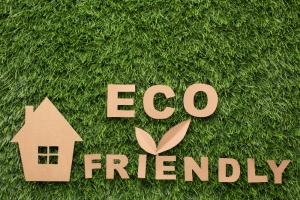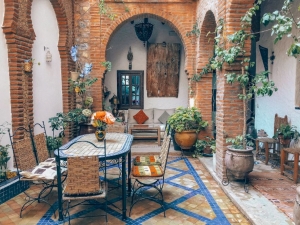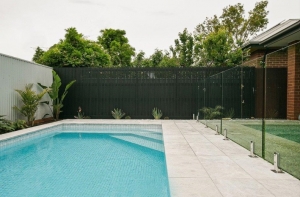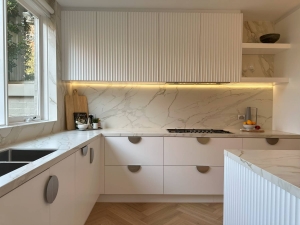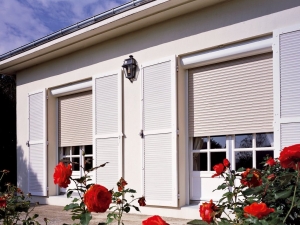Sustainability is no longer some progressive initiative that only high-affluence homes can pursue. Homes of all incomes can find ways to cut costs and reduce their carbon footprint in the process. Of course, there are more expensive and more affordable options to accomplish this, some of which we will cover here.
As energy costs go up and environmental concerns grow, making sustainable upgrades to your home has never been more important. From energy-efficient appliances to smart heating and cooling solutions, there are many ways to make your living space more eco-friendly.
Here are six home upgrades to do now to make your home greener and more efficient.
1. Upgrade Your Heating and Cooling
Heating and cooling make up a big share of home energy consumption. Traditional HVAC systems are energy guzzlers, but more efficient options are available. One of the ideal ways to reduce energy expenses is to install a mini split system. These ductless systems offer zone-based climate control so you can cool or heat individual rooms as needed rather than the whole house.
This reduces energy waste, especially in larger homes or homes with multiple levels. Mini splits are more energy efficient than traditional central air systems, so you'll see a reduction in your energy bill. Homeowners looking to upgrade their HVAC should do this first as it's one of the biggest impact changes for sustainability.
2. Go LED
Lighting is a simple but big way to make your home more sustainable. Incandescent bulbs waste energy as heat; LED bulbs convert most of their energy into light, so they're much more efficient. Swapping out traditional bulbs for LEDs can reduce your energy use by up to 75%.LEDs last 25 times longer, so fewer replacements and less waste. The change may seem small, but when you add it up for every room in your home, the impact is big. For an even bigger sustainability boost, try using smart lighting systems that let you schedule and control lights remotely so you don't leave lights on when you're not home.
3. Seal Air Leaks and Insulate
Many homes lose energy through small cracks, gaps, and poorly insulated areas. This energy loss stresses your heating and cooling system, which ultimately leads to higher energy bills and more emissions. That's a double loss. Not only are you losing heat more frequently, but you're spending more on replenishing that heat.
Sealing air leaks around windows, doors, and attic spaces is a quick fix with big benefits. Weatherstripping, caulking, and adding door sweeps are affordable ways to seal your home's envelope. For an even bigger impact, consider upgrading your insulation, especially in attics and crawl spaces. Better insulation keeps warm air in during winter and cool air in during summer so your home can maintain a predictable temperature while spending less energy in the process.
4. Replace Your Windows with Energy-Efficient Windows
Old single-pane windows are notorious for letting conditioned air out and outdoor air in. This makes it harder to keep your home at a comfortable temperature and increases energy use. Replacing older windows with energy-efficient double or triple-pane models creates a better barrier between your home and the outdoors.
These windows are usually coated with low emissivity (low-E) film, which reflects heat back into your home during cold seasons and deflects it in warmer periods. While the upfront cost is definitely high, energy-efficient windows can save you from excessive energy loss over the long run.
5. Install Solar Panels
If you're ready to make a big investment in sustainability, solar panels are a big choice. When you produce your own electricity, you effectively reduce your fossil fuel usage and lower your energy bills. With advancements in solar technology, panels are more efficient and affordable than ever.
Many states offer incentives, tax credits, or rebates to homeowners who go solar so it's more accessible. If solar panels are out of budget, you can start smaller by using solar-powered outdoor lights or chargers for small devices.
6. Configure Low Flow Water Fixtures
Reducing water waste is a big part of sustainable living, and low-flow fixtures make it easy to cut back on water use without sacrificing performance. Faucets, showerheads, and toilets with low-flow technology reduce the amount of water used while maintaining strong pressure. Some fixtures even have dual flush capabilities, so you can choose how much water to use based on the task.
Water conservation helps the planet and can also lower your water bill. Low-flow upgrades are quick to install and available at all price points, so it's an easy win for sustainability.
Get Started with Your Sustainable Home Now
Sustainable home upgrades reduce your environmental impact and improve comfort, cut energy bills, and increase your home's value. If you want to make a big change, consider upgrading to a mini-split system. This energy-efficient heating and cooling solution gives you precise climate control, reduces your energy footprint, and is a modern alternative to old HVAC systems.
If you're ready to go all in on sustainability, think about combining multiple upgrades like sealing air leaks, upgrading insulation, and adding smart home technology. Small changes add up, and the sooner you start, the sooner you'll see the benefits of a more efficient-friendly home.

